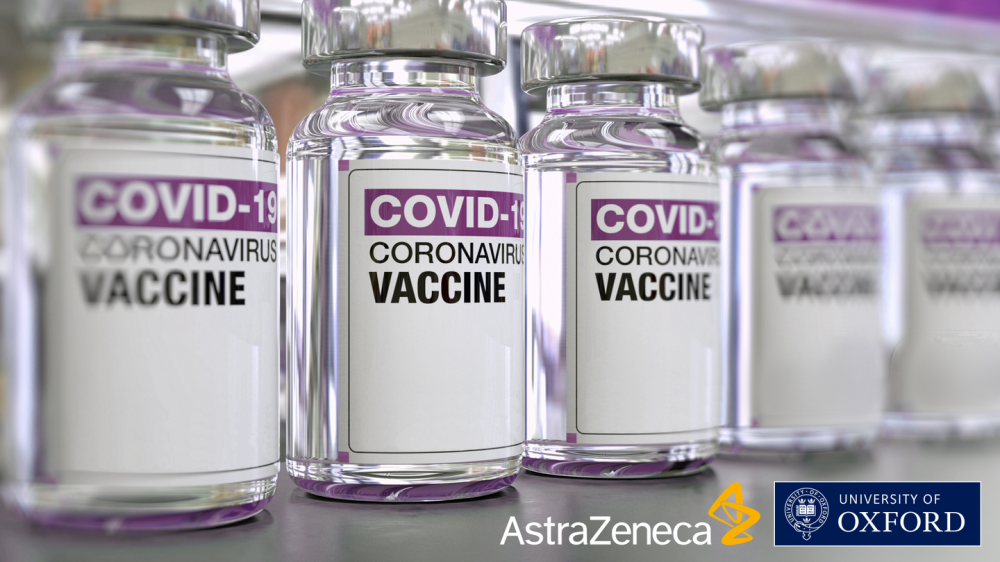
This post has been updated. It was originally published on 3/22/21.
A fourth drug manufacturer, AstraZeneca, announced positive results in Phase III COVID vaccine trials in the United States this week. The results were quickly thrown into doubt late Monday night when the National Institute of Allergy and Infectious Diseases released a statement that they were concerned the numbers were based on outdated data. But new data reviewed by the Data and Safety Monitoring Board and released by AstraZeneca shows that the vaccine is only slightly less effective than initially reported: 76 rather than 79 percent at preventing symptomatic illness. It’s still 100 percent effective at preventing severe disease.
AstraZeneca’s vaccine, developed in partnership with Oxford University, and with some funding from Operation Warp Speed, is in widespread use outside the US but still hasn’t been submitted for FDA review, the first step in receiving an emergency use authorization. That’s likely to happen at least a month from now.
This vaccine is much easier to distribute than the mRNA varieties because it can be stored for six months in regular refrigeration. However, unlike Johnson & Johnson’s vaccine, it still consists of two shots, given four weeks apart.
According to a press release from AstraZeneca, in the Phase III trial the vaccine was 79 percent effective at preventing symptomatic disease, and 100 percent effective against severe disease and hospitalization. That’s very similar to the results of the Johnson & Johnson vaccine, which was 66 percent effective against “moderate illness,” and 100 percent effective against hospitalization and death.
The release also specifically breaks down efficacy for those 65 and older, who made up 20 percent of trial participants. In that population, the vaccine was 80 percent effective.
However, as has been the case with nearly every COVID vaccine, the press release precedes the release of full clinical data, so it’s impossible to independently verify those results.
The announcement also contains safety results that might address concerns about the vaccine. Although the AstraZeneca shot has been approved for use in a number of countries, including the UK in January, it has hit a number of safety concerns along the way. After a British trial participant fell ill with neurological symptoms in early fall, governments around the world paused clinical trials. The US trial resumed in October after the FDA reviewed the findings and signed off.
Then, in early March, a number of European countries suspended the use of the drug, after two Austrians experienced blood clotting after vaccination, one of whom died 10 days later. Distribution resumed a week later, after the European Medicines Agency announced that “there is currently no indication that vaccination has caused [the clotting].” Studies into other blood-related side effects are ongoing, although the EMA has pointed out that COVID-19 also leads to blood clots, and the risk of developing them due to the disease is higher.
[Related: Why people cared less about catching COVID when it mattered most]
According to the release, an independent data safety monitoring board specifically reviewed US trial data for blood clotting, and found no cases of dangerous clotting among vaccine recipients in the US trial.
Still, vaccine hesitancy in Europe, both towards AstraZeneca and other drugs, is on the rise. But more important than the safety data is how it’s communicated to the public, both in Europe and elsewhere. Writing in Slate, Shobita Parthasarathy, director of the Science, Technology, and Public Policy Program at the University of Michigan, argued, “This crisis isn’t about science at all. It’s about public trust, and scared citizens cannot be easily convinced by expertise that feels remote.”
Participants in the 32,000 person trial were recruited from across the United States. Other AstraZeneca trials have been conducted in Brazil, South Africa, and the UK. However, it’s hard to compare data from those international trials, which found lower overall efficacy, because some participants were given a half dose on their first shots. They ended up being better protected, counterintuitively. The US trial used the “correct” full two doses, but in December, AstraZeneca officials said they were in talks with regulators across the world to run trials involving the half-dose
Unlike the results from the Johnson & Johnson trial, however, the efficacy numbers for this trial weren’t broken down by country. That’s an important omission, because the efficacy of the vaccines may vary depending on the COVID variant circulating. The Johnson & Johnson trial found lower efficacy in South Africa, where a concerning variant, B.1.351 is widespread. A similar strain, P.1, is circulating in Peru.
Much like the vaccine produced by Johnson & Johnson, AstraZeneca uses a weakened chimpanzee adenovirus to induce an immune response. The adenovirus, from a family of viruses that normally cause mild colds, is produced without key genes that would allow it to replicate inside cells and cause disease. In place of those genes, researchers insert the genetic “recipe” for the SARS-CoV-2 spike protein.
Once the vaccine is injected, the adenovirus quickly dies, but your cells use that recipe to manufacture spike proteins, in a very similar process to the mRNA vaccines made by Moderna and Pfizer. Even though the proteins aren’t attached to a live virus, your immune system recognizes them as a threat, and learns how to neutralize them. Because the genetic recipe comes wrapped in a virus, it’s more durable than the mRNA varieties.
But by the time the FDA approves AstraZeneca’s drug in the United States, the country is likely to have enough doses from Moderna, Pfizer, and Johnson & Johnson to cover its needs. On March 3, president Joe Biden said that the US was “on track” to produce enough vaccines for the entire adult population by the end of May.
On March 18, the United States sent 2.5 million doses from its national stockpile to Mexico and 1.5 million to Canada—the first time it had exported any vaccine from its 30-million-dose stockpile. If the US does hold onto many of those stockpiled AstraZeneca doses in hopes of distributing them after FDA approval, it could prolong the pandemic worldwide, extending the already massive human toll. Though winter surges have ended here, COVID is on the rise elsewhere in the world—both India and Pakistan are experiencing massive increases in cases. Meanwhile, global vaccination rates are far behind the US, as the rest of the world waits for doses. This news of AstraZeneca’s efficacy might be more evidence that it’s time to share.






